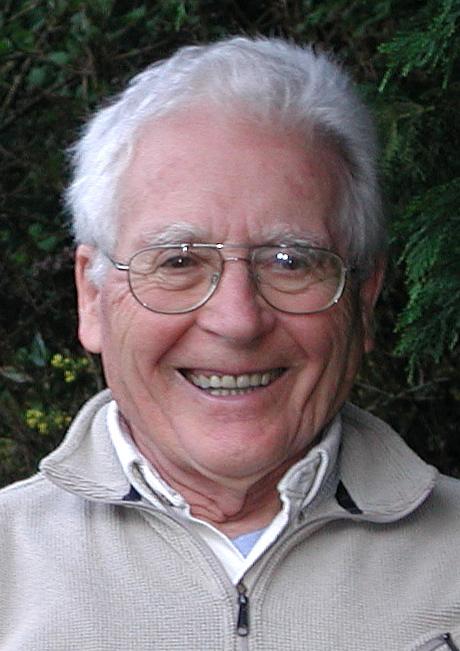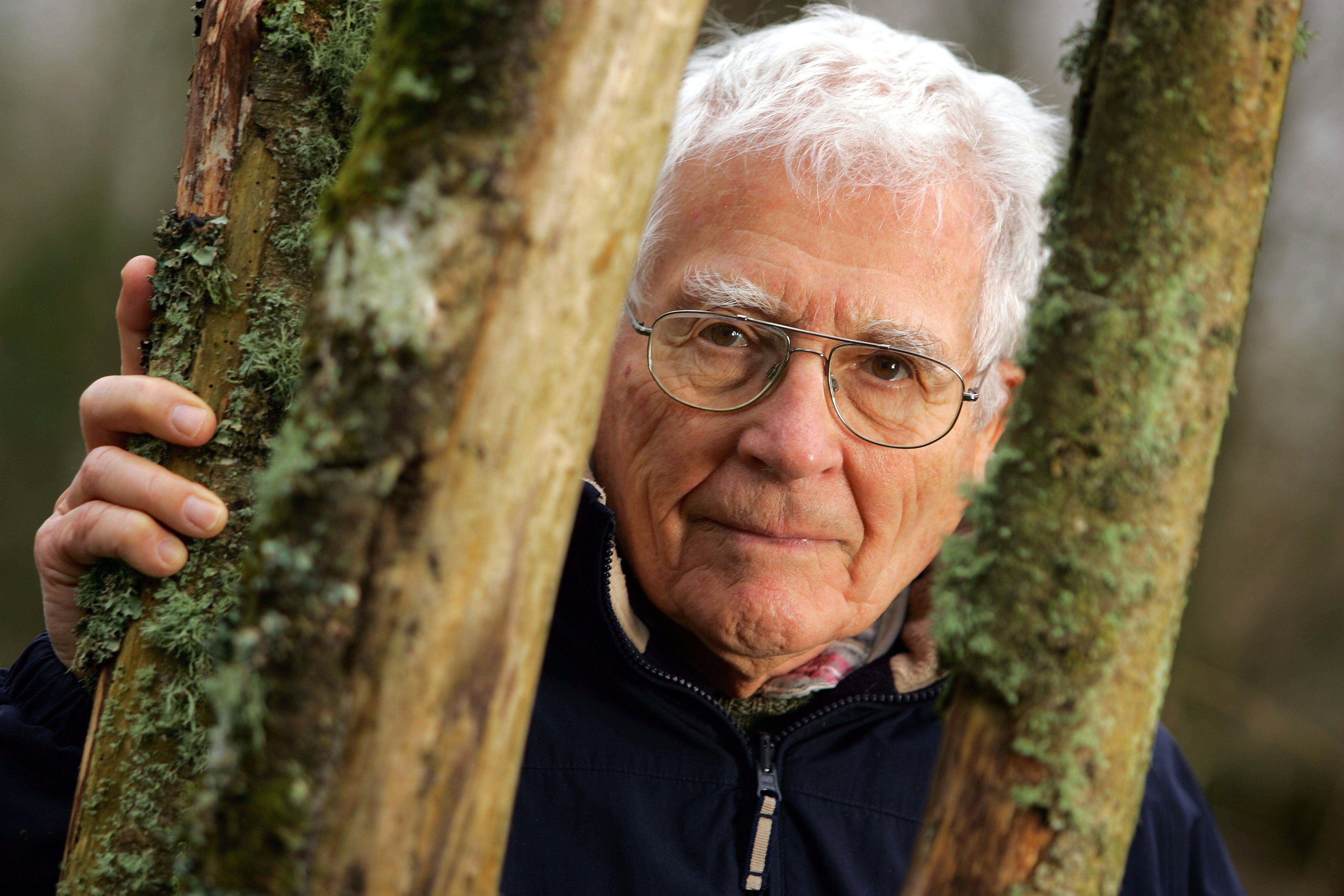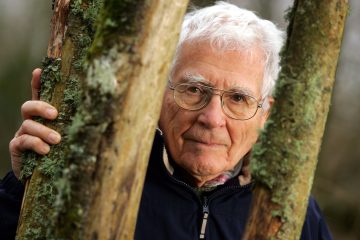Table of Contents
- The Visionary Mind Behind Gaia Theory
- Exploring the Interconnectedness of Earths Systems
- James Lovelocks Insights on Climate Change and Sustainability
- Practical Steps Towards Embracing a Living Earth Philosophy
- The Legacy of James Lovelock and Its Impact on Environmental Thought
- Q&A
- In Retrospect

The Visionary Mind Behind Gaia Theory
At the core of the Gaia Theory lies the visionary insights of James Lovelock, whose pioneering work revolutionized our understanding of Earth’s complex systems. Lovelock posited that the planet acts as a self-regulating entity, where biotic and abiotic components interact in a delicate balance. Through his research, he highlighted the interdependencies that characterize living organisms and their environment, illustrating how life influences the Earth’s atmosphere, hydrosphere, and even geology. This holistic view was not just groundbreaking in scientific circles; it sparked a broader conversation about ecological stewardship and sustainability.
One of the most profound aspects of Lovelock’s theory is its emphasis on *feedback mechanisms* within the Earth system. For example, he identified various processes that maintain the conditions necessary for life, such as:
- Carbon Dioxide Regulation: The role of phytoplankton in absorbing CO2 and thus influencing climate.
- Temperature Control: The way plant life influences surface temperatures through transpiration.
- Soil Composition: The interaction between decomposers and nutrient cycling in maintaining soil health.
Lovelock’s contributions extend beyond theoretical frameworks; they compel humanity to examine its place within the biosphere critically. To exemplify this, his work has fostered a new appreciation for the relationships between various life forms and their environments, demonstrated in the following simple table of interactions:
| Element | Function | Impact on Gaia |
|---|---|---|
| Plants | Photosynthesis | Produce oxygen and sequester carbon. |
| Microorganisms | Nutrient Cycling | Decompose organic matter, enriching soil. |
| Animals | Pollination | Facilitate plant reproduction and genetic diversity. |
Exploring the Interconnectedness of Earths Systems
Understanding the intricate web of interactions within our planet is essential for grasping the principles of ecology and sustainability. Earth’s systems—the atmosphere, hydrosphere, lithosphere, and biosphere—are not isolated entities; rather, they function in harmony, influencing and shaping one another in a myriad of ways. For instance, changes in atmospheric conditions can lead to variations in water availability, which subsequently affects soil quality and the types of vegetation that can thrive in a particular region. This interconnectedness is not merely academic; it has profound implications for environmental policy and conservation efforts worldwide.
One of the most striking examples of these interconnections is the role of ecosystems in climate regulation. Forests, wetlands, and oceans act as carbon sinks, absorbing significant amounts of carbon dioxide from the atmosphere. This process not only mitigates the effects of greenhouse gases but also supports a diverse range of plant and animal life. Moreover, the degradation of one system can lead to cascading effects throughout the network—deforestation, for example, can disrupt local rainfall patterns, impacting agricultural yields and food security across entire regions.
To visualize the magnitude of these relationships, consider the table below, which summarizes the key components of Earth’s systems and their interactions:
| System | Key Interaction | Impact |
|---|---|---|
| Atmosphere | Regulates climate | Affects biodiversity |
| Hydrosphere | Supports life | Influences weather patterns |
| Lithosphere | Provides nutrients | Affects vegetation growth |
| Biosphere | Interacts with all systems | Drives ecological processes |
Recognizing this interconnectedness serves as a call to action. By fostering an understanding of how the various systems affect each other, we can develop more effective strategies for addressing environmental issues like climate change, habitat destruction, and biodiversity loss. Approaching these challenges requires collaboration and a holistic view of our planet, where the health of one system is crucial to the wellbeing of another.

James Lovelocks Insights on Climate Change and Sustainability
James Lovelock, a pioneer in environmental science, has profoundly influenced our understanding of climate change and sustainability through his groundbreaking Gaia theory. This concept posits that the Earth functions as a self-regulating system, where living organisms and their inorganic surroundings work in tandem to maintain conditions conducive to life. Lovelock argues that human actions disrupt this delicate balance, leading to detrimental effects on our planet’s climate. Acknowledging this interconnectedness is crucial for developing effective strategies to mitigate climate change.
In his later works, Lovelock emphasizes the importance of adopting a holistic approach to environmental issues. He advocates for sustainable practices that not only address carbon emissions but also consider the intricate relationships within ecosystems. Some of these practices include:
- Renewable energy sources like solar and wind
- Circular economy principles that reduce waste
- Biodiversity conservation to support ecosystem resilience
Furthermore, Lovelock warns against complacency in the face of climate change. He believes that swift action is necessary, urging individuals and governments alike to rethink their roles in nurturing the Earth. He often suggests a shift towards local, community-focused solutions, which can enhance sustainability and foster a deeper connection to the environment. This grassroots movement can be fundamental in reshaping our approach to ecological stewardship as we confront the challenges posed by our rapidly changing climate.

Practical Steps Towards Embracing a Living Earth Philosophy
Embracing a Living Earth philosophy involves integrating our understanding of the interconnectedness of all life forms into our daily practices. One practical step is to cultivate a deep awareness of the natural world around us. This can be achieved through regular activities such as:
- Nature walks to observe local ecosystems
- Gardening to understand soil health and biodiversity
- Participating in community clean-up events to promote environmental stewardship
Another vital aspect is implementing sustainable practices in our homes and communities. Adopting simple, eco-friendly habits can make a significant difference, including:
- Reducing waste through recycling and composting
- Utilizing energy-efficient appliances
- Choosing local produce to minimize carbon footprints
advocacy and education play crucial roles in promoting a Living Earth ethos. Sharing knowledge about environmental issues with others fosters a culture of awareness. Effective approaches can involve:
- Organizing workshops on sustainable living
- Utilizing social media platforms to raise awareness and share resources
- Collaborating with local schools to integrate environmental education into the curriculum

The Legacy of James Lovelock and Its Impact on Environmental Thought
James Lovelock’s ideas revolutionized our understanding of the relationship between Gaia, the Earth, and its inhabitants. By proposing the Gaia Hypothesis, Lovelock emphasized the notion that Earth functions as a self-regulating, complex system, where living organisms interact dynamically with their inorganic surroundings. This groundbreaking perspective shifted environmental thought from anthropocentrism—the belief that human beings are the most significant entity in the universe—to a more ecocentric view that recognizes the interconnectedness of all life forms. Lovelock’s work challenges us to reconsider humanity’s role and responsibility within the biosphere.
His insights sparked a broader movement toward sustainability and conservation, encouraging individuals and societies to adopt practices that honor the delicate balance of ecosystems. Among his influential contributions are:
- Holistic Thinking: Promoting a comprehensive view that sees ecological interdependence.
- Climate Change Awareness: Foreseeing the implications of anthropogenic climate change long before it became mainstream.
- Advocacy for Technological Solutions: Encouraging innovation alongside natural processes, like his guidance on geoengineering technologies.
Lovelock’s legacy also emphasizes the critical need for new metaphors in environmental discourse. By likening Earth to a living organism, he fosters a deeper emotional connection to nature. This conceptual shift encourages actions such as:
| Action | Impact |
|---|---|
| Sustainable Practices | Preserve biodiversity and natural resources |
| Restoration Projects | Enhance ecosystem resiliency |
| Community Engagement | Foster a sense of stewardship for the planet |
Q&A
Q&A: Understanding James Lovelock and His Vision of the Living Earth
Q1: Who is James Lovelock, and what is his significance in environmental science? A1: James Lovelock is a renowned scientist, environmentalist, and futurist, best known for formulating the Gaia Theory. Born in 1919, Lovelock’s work emphasizes the concept that Earth functions as a self-regulating, complex system where living organisms and their inorganic surroundings are interconnected. His theories have significantly influenced our understanding of ecology and climate science, urging us to rethink our place in the natural world.Q2: What is the Gaia Theory, and how does it relate to Lovelock’s view of Earth? A2: The Gaia Theory posits that the Earth and its biological systems behave as a single, self-regulating entity. According to Lovelock, life on Earth maintains conditions necessary for its survival, creating a balanced environment. This theory suggests that by studying the interplay between life and the planet, we can better understand and address pressing issues like climate change and biodiversity loss.
Q3: What inspired Lovelock to develop the Gaia Theory? A3: Lovelock was inspired by his experiences as a scientist and his observations of the Earth’s ecological systems. Working with NASA in the 1960s, he explored how life influences the atmosphere and climate, which led him to propose the idea that biological processes are integral to the Earth’s stability. His fascination with the intricate relationships within ecosystems propelled him to explore these ideas further.
Q4: How has Lovelock’s work influenced modern environmental movements? A4: Lovelock’s Gaia Theory has become a cornerstone of environmental thinking, influencing both scientific discourse and activism. By advocating for an ecological perspective that recognizes the interconnectedness of all life, his work has inspired movements focused on sustainability, conservation, and climate action. It has encouraged a holistic approach to environmental problems, making it clear that humanity must coexist responsibly with nature.
Q5: What criticisms has Lovelock faced regarding his theories? A5: While Lovelock’s ideas have garnered widespread attention, they have also faced scrutiny. Some critics argue that the Gaia Theory oversimplifies complex ecological processes or anthropomorphizes the Earth. Others question the practicality of applying Gaia as a framework for scientific research and policy-making. Despite these criticisms, Lovelock’s ideas continue to spark conversation and exploration in environmental science.
Q6: What legacy does James Lovelock leave for future generations? A6: Lovelock’s legacy lies in his bold challenges to conventional thinking about the environment. His promotion of the interconnectedness of life and the planet has inspired generations to consider sustainability as a critical aspect of human existence. By urging us to view Earth as a living entity, Lovelock has encouraged a profound respect for nature—a perspective that is increasingly vital in today’s world facing climate emergencies.
Q7: How can individuals apply Lovelock’s principles in their daily lives? A7: Individuals can embody Lovelock’s principles by adopting sustainable practices that respect the environment. This can include reducing waste, conserving energy, supporting local ecosystems, and advocating for policies that protect our natural surroundings. By recognizing our actions’ impact on the planet’s health, we can contribute to a collective effort towards a more sustainable future.—This Q&A serves as a concise yet informative overview of James Lovelock’s contributions to environmental science and the ongoing relevance of his work in promoting ecological awareness and action.



0 Comments